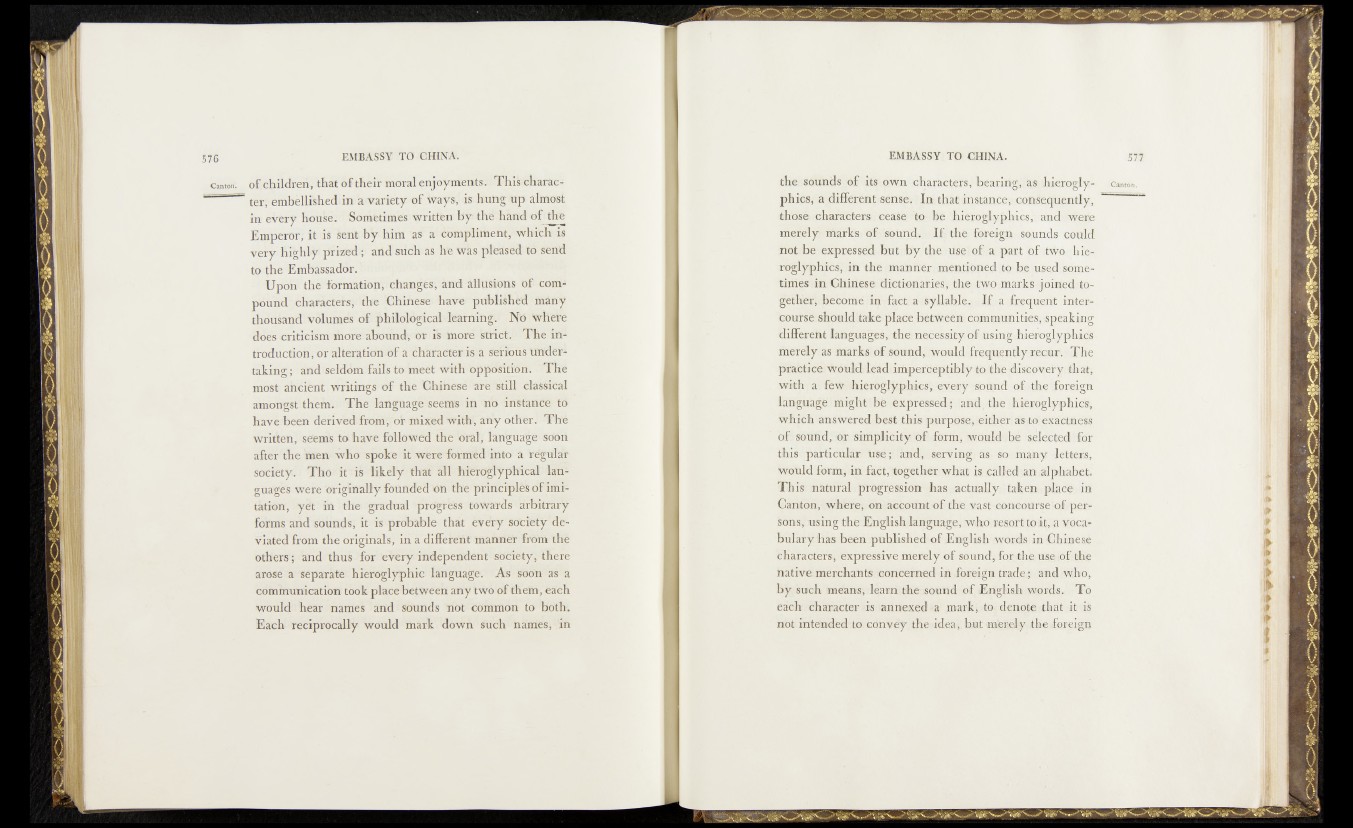
576
Canton
EMBASSY TO CHINA.
of, children, that of their moral en^ymeritsc; Thiteharae-'
ter; embellished.in avariety of Ways, is hutag up almost
in eWery höi|üïft Sometimes writtfen b y thé hand of : the
Emperor, it is Sent b y Mm as a compliment, whifeh is
very highly prized ; arid stick-as he whs plbasidto serin
to the Embassador.
Upoh the formation, changes, and allusions o f cöMJ
pound characteis,tbe Chinese have published mhny
thousand volumes of philological learning. NO Whèfè
dóes criticism more abound', or is moré ‘strict The in^
traduction* Or alteration n f a chWaCteris a sefËüs HSÉSi*
taking ; and seldom fails to meet with opposition. Thé
most ahciènt writings Of the Chinese Ireistill claSSfeaJ
amongst them. The language seeöte in no instance. fO
have been derived fr-om, or mixed with, any other. Th’é
written, seems to have followed the oral, language-Sdori
after the men who spoke it were formed into a re'guiaF
society. Tho it is likely that all hieroglyphic&l languages
were Originally founded On the principle's of imitation,
ydt in the gradual prdgrèss towards arbitrhry
forms and sounds, it is probable that evdry society deviated
from tHe originals, in a different manner from the
others ; knd thus for every independent society, there
arose a separate hieroglyphic language. As soon as a
communication took place between any two of them, each
would hear names and sounds not common to both.
Each reciprocally Would mark down such nantes, 'in
the sounds of its qWn ^haraeb|ys,J bea.riri!g;'|as {hieroglyphics,
a different-sense. In thatdn^anc&^on^teqnentiy,
those characters. ceaSe to.- be '
mexely-marks of-’sound.. the* isjeig^ . sojuids could
not be expressed,but<h>y the, I uoe|of|^. .part of two hie*
rdglyphics, in the manner>mentioned ►t§}h:ejusedlsome-
times in Chinese* dietiofiteks,' the two^marks jpjhed-together!.
become in’ fact, a*Syllable. If <a-frequent in<te^
koursiftshiwMitakfi place between communities, speaking
differeht languages,, theingeesj^tybf using h ief oglypliids
merely.as marks of sound,, woul,4feequ4nt:l;y rfic,ir. The
practice Would leadiiriiperceptihly to (the discovery that,
with a few hieroglyphics*,-eyery ‘sound of the |f@>refgri
language * might. be 'hxpressed^ and, the fbitflaig%phies,
which answered best .this
oh sound, or simplicity wbuld.be -selectodSfer
this particular use; and. serving^as
Would form, in fact, together what is called tan* .alphabet
This natural progression has actually;'taken place in
Canton, where, on account >of this Y&stWonteoip^itffrp.er-
Isonsv using the English-language,
bulary has been published of English dvcsrdlsiri Chin ess®
characters, expressive merely o f sound, forth« use-.of the
hativeimserchants ;concecned in foreign-tr-adei 'and who,
by such means, leaim:tke;somnd?$f klhglish .words* To
each character is annexed-a marks -to; -denote;, that git is
not intended toi convey theddea-, but < the'dhrf jgn
Canton.
V W f f l w y » Ww